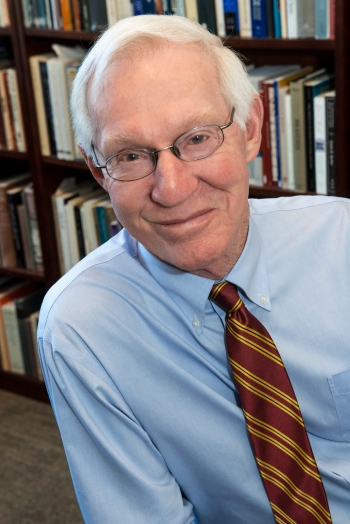
By
America’s ongoing debate over the relationship between religion, individual rights and government has heated up this summer, as evidenced by reaction over US Supreme Court decisions in the Hobby Lobby and women’s health clinic “buffer zone” cases.
A new book by Professor of History Alan Rogers explores a previous chapter in this continuing imbroglio: attempts to prosecute parents who use prayer and spiritual healing to treat their children’s medical problems.
In The Child Cases: How America’s Religious Exemption Laws Harm Children, Rogers looks at seven high-profile cases in the 1980s and ’90s – including one in Massachusetts – involving Christian Scientists who refused to seek medical treatment for their children. (A handful of other religious groups also rely solely on prayer to heal illness.) The Christian Science parents claimed that the First Amendment’s free exercise clause, and religious exemptions in the 1974 federal Child Abuse Prevention and Treatment Act, shielded them from intervention or prosecution by authorities. In all cases, the parents were able to avoid conviction and imprisonment, whether through appeal, pleading guilty to a reduced charge, or other legal grounds.
The religious exemption question reflects a quintessentially American dilemma, says Rogers: the struggle to balance individual rights with the state’s obligation to enforce laws. The oft-contentious conversation on government’s role in society takes on more layers when elements of religion, privacy and family are added, as Rogers illustrates in the book.
“It’s the beauty, and burden, of America,” says Rogers. “We have long been a nation of new beginnings. People came here to have the freedom of religious expression, and throughout our history people have started new religions, from Christian Scientists to Mormons to Seventh-day Adventists.
“Our constitution offers legal protection to believe in whatever you want – but our legal history has held that you can’t always act on your belief, especially if it’s potentially harmful to others, and especially if they are children.”
For his book, Rogers used court records and media archives to reconstruct highly detailed narratives of the five cases, including that of two-year-old Robyn Twitchell of Hyde Park, Mass., who in 1986 died of a bowel obstruction a medical expert testified could have been prevented. Robyn’s parents David and Ginger were indicted for manslaughter, setting off some four years of legal parrying by the prosecution and defense as to whether the Twitchells’ refusal to seek medical attention for their son constituted willful neglect and abuse, or a carefully considered exercise of strongly-held religious values.
The 54-day trial in 1990 ended with the Twitchells’ conviction of involuntary manslaughter, for which they were sentenced to 10 years of probation, with the provision that they obtain regular medical check-ups for their three surviving children and seek medical help in the event of serious illness. The state Supreme Judicial Court set aside the conviction on grounds of due process in 1993.
Here, as in the book’s other chapters, Rogers interpolates the social, political and media activity, on both a state and national level, by supporters and detractors of religious exemption as argued by Christian Scientists. For example, the same year the Twitchells’ conviction was overturned, Massachusetts repealed the religious exemption law they had cited in their defense.
Rogers notes that the spiritual-healing issue goes far back in American history, with a rash of similar cases taking place in the early 20th century. In response, he says, medical, legal and child welfare professionals voiced support for state laws to protect children from abuse and neglect, while various commentators – including Catholics and mainstream Protestants – denounced Christian Science’s claims of healing via prayer.
“One thing Christian Scientists had in their favor during that era was that medical science was not particularly advanced,” says Rogers. “In those cases, the defense’s argument would be ‘Could a doctor do any better than prayer?’ and often the answer was ‘No.’
“In the 1980s and ’90s, after decades of advances in medical science and health education, that was a harder sell. Yet even in this supposedly more enlightened age, Christian Scientists were able to find support for their position.”
Rogers points to the Christian Science Church’s political influence as helping limit the scope and breadth of child abuse laws while pushing for religious exemption clauses in individual states, as factors that mitigated successful prosecution of cases like the Twitchells. Faced with what they perceived to be governmental intrusions on religious liberty, some religious groups chose to side with Christian Scientists, while within the church itself disagreements or concerns over spiritual healing were shunted aside.
“It’s a complex story which can’t, and shouldn’t, be told in broad strokes of a church-versus-state framework,” says Rogers. “These cases are gripping and heartbreaking, and the inescapable fact is, these kids died of illnesses that could’ve been treated or prevented. Whatever the legal or political circumstances, that is a tragedy we cannot ignore.”



